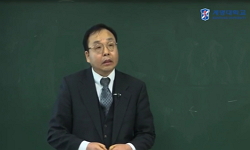정치적 규제는 중국 텔레비전 산업을 형성하는 데 중요한 역할을 한다. 시진핑 국가주석이 이끄는 정부가 상부구조에 역점을 두면서 미디어 규제기관인 광전총국은 각 분야에 대한 감독과 ...
http://chineseinput.net/에서 pinyin(병음)방식으로 중국어를 변환할 수 있습니다.
변환된 중국어를 복사하여 사용하시면 됩니다.
- 中文 을 입력하시려면 zhongwen을 입력하시고 space를누르시면됩니다.
- 北京 을 입력하시려면 beijing을 입력하시고 space를 누르시면 됩니다.
Constructing ‘ordinary people’ : regulation, production, and representation of ordinary people in the all-star reality game show
한글로보기부가정보
국문 초록 (Abstract)
정치적 규제는 중국 텔레비전 산업을 형성하는 데 중요한 역할을 한다. 시진핑 국가주석이 이끄는 정부가 상부구조에 역점을 두면서 미디어 규제기관인 광전총국은 각 분야에 대한 감독과 지시를 강화했다. 특히 올스타 리얼리티쇼가 넘쳐난 텔레비전 시장을 바로잡기 위해서 광전총국은 2015 년과 2017 년에 일반인을 리얼리티쇼에 출연시키는 규정을 발표했다. 이러한 배경에서 본 연구는 중국 대표적인 올스타 리얼리티쇼 <달려라 형제>와 개칭된 <달려라>를 중심으로 일반인 출연자의 재현에 관한 변화를 살펴봤다. 그리고 문화흐름 (the circuit of culture) 이론을 기반으로 규제, 제작, 재현이 어떻게 서로 영향을 미치는지를 탐구했다. 내용분석과 텍스트분석을 통해 일반인 출연자의 확대된 비중, 모범적 정체성, 심층적인 참여 등의 변화가 극명하게 나타난 것으로 밝혀졌고 이는 관전총국의 요구사항을 반영했다는 점도 확인했다. 또한 심층 인터뷰를 통해 각 당사자 간의 투쟁, 협상 및 타협의 과정도 밝혀졌으며, 이는 중국의 상황에서 텔레비전 제작의 복잡한 권력 관계를 보여주었다.
다국어 초록 (Multilingual Abstract)
Regulations play a vital role in shaping the Chinese television industry, and the media regulator has stepped up supervision on different sectors as the government headed by Xi Jinping has put more weight on the transformation of superstructure. Targe...
Regulations play a vital role in shaping the Chinese television industry, and the media regulator has stepped up supervision on different sectors as the government headed by Xi Jinping has put more weight on the transformation of superstructure. Targeting the television market flooded with all-star reality shows, the regulator issued two regulations specifically requiring the integration of ordinary people into those programs. Under such a context, this study attempted to identify the representational changes of ordinary people in Hurry Up! Brother and its re-titled series Keep Running, the highest-rated reality game show in China, and to explore how regulation, production, and representation entangled with each other in the meaning-making process by adopting the circuit of culture theory as the analytical framework. The content analysis and textual analysis revealed that changes drastically appeared in ordinary people’s larger proportion, professionalized identities, and increased participation, which strongly echoed the regulator’s requirements. However, in-depth interviews also uncovered the intricate process of struggles, negotiations, and compromises among different parties involved, illustrating the complicated power relationships in television production within the Chinese context.
목차 (Table of Contents)
- 1. Introduction 1
- 2. Literature Review 5
- 2.1 Theoretical Background: Television, Nation, and Ideology 5
- 2.1.1 Mass Media and Ideology in the National System 5
- 2.1.2 Ideological Struggles, Reality Shows, and Regulations in Chinese Television 9
- 1. Introduction 1
- 2. Literature Review 5
- 2.1 Theoretical Background: Television, Nation, and Ideology 5
- 2.1.1 Mass Media and Ideology in the National System 5
- 2.1.2 Ideological Struggles, Reality Shows, and Regulations in Chinese Television 9
- 2.2 People, Chinese Dream, and Ordinary People in Reality Television 19
- 2.2.1 Chinese People and the Chinese Dream 19
- 2.2.2 Ordinary People in Reality TV 29
- 2.3 The Circuit of Culture 34
- 3. Research Questions and Methodology 39
- 4. Findings 47
- 4.1 The Representational Changes of Ordinary People 47
- 4.1.1 Larger Proportions and “Staying Close to Real Life” 47
- 4.1.2 Professionalized Identities and the Role-model Education 54
- 4.1.3 Increased Participation and the “Harmonious Society” 61
- 4.2 Producing the Representation of Ordinary People 69
- 4.2.1 Two-way Communication in a Hierarchical Structure 69
- 4.2.2 The Selected and Manipulated ‘Ordinary People’ 80
- 4.2.3 Dilemmas in Constructing ‘Ordinary People’ 90
- 5. Conclusion 104
- References 115
- Korean Abstract 130










